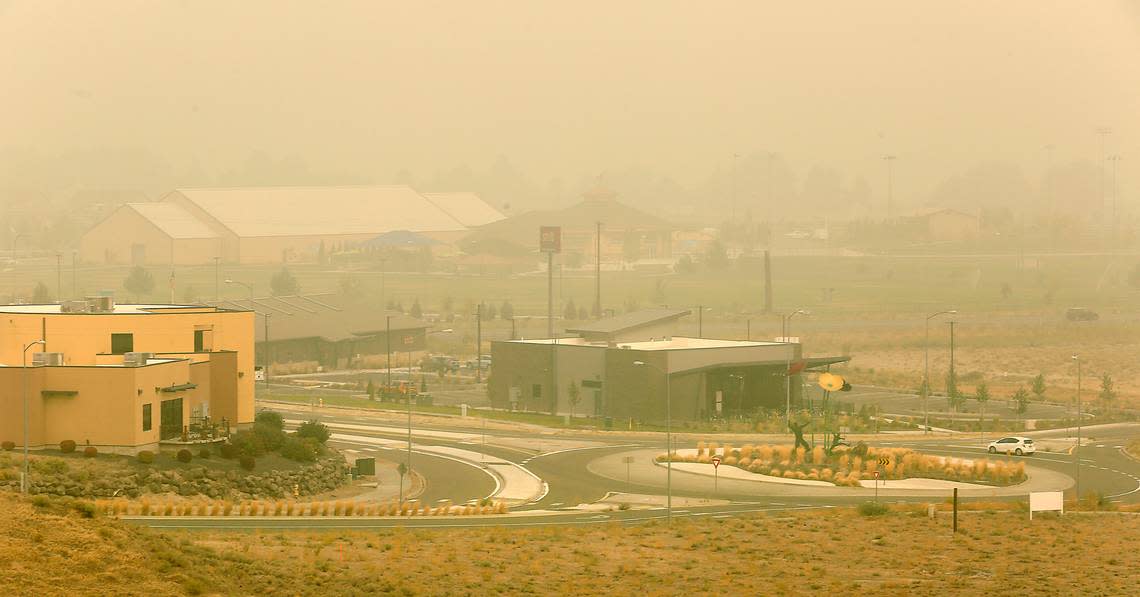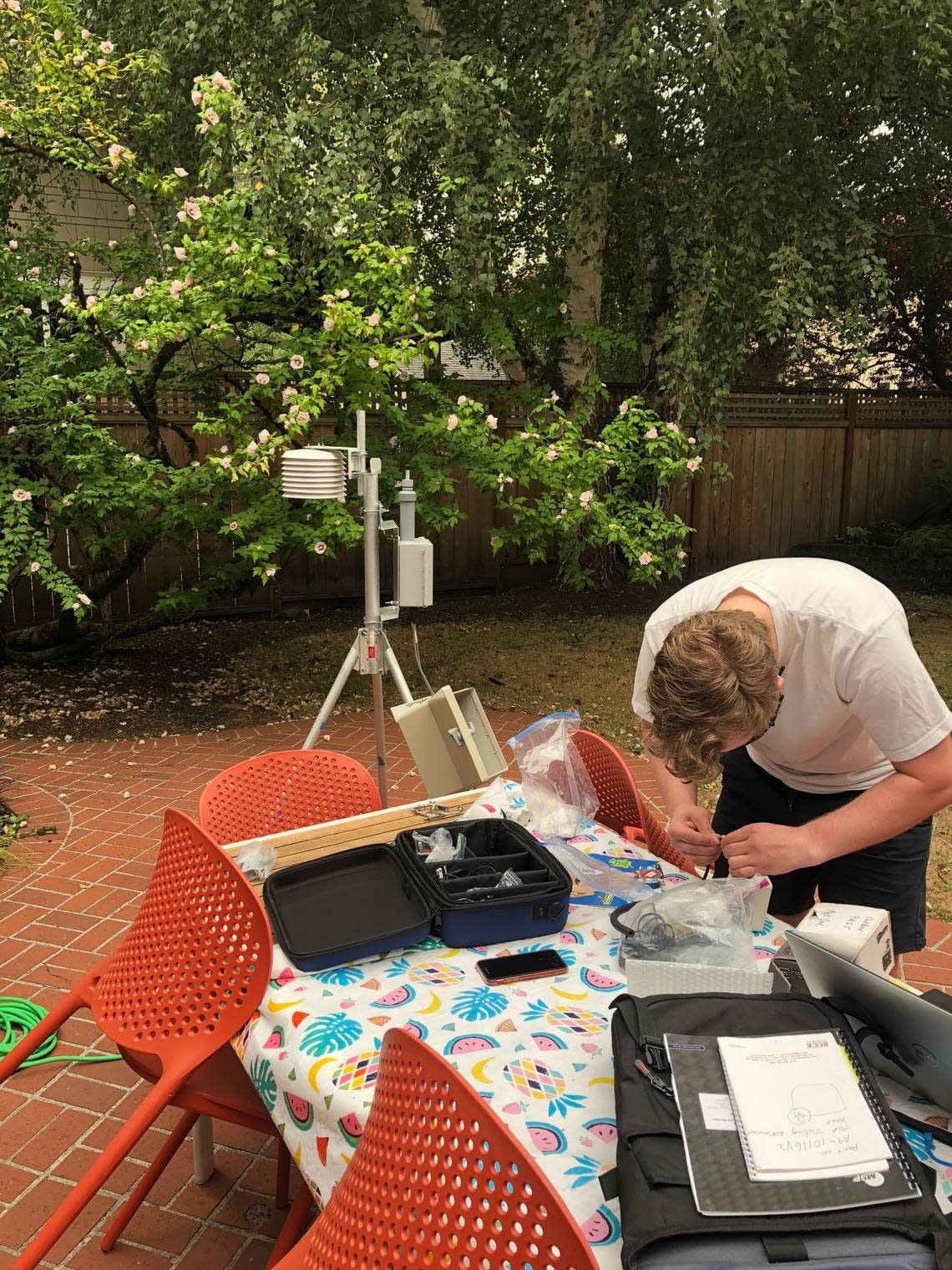Wildfire smoke can also hurt you indoors. WA experts share simple ways to protect yourself
When the air outside gets smoky, the advice is to stay inside.
But is inside air healthy?
Not necessarily, according to a study done recently by Pacific Northwest National Laboratory researchers.
But there are steps you can take to help protect vulnerable family members, like children, the elderly, pregnant women and those with serious health conditions like asthma, diabetes and heart disease.
In the extremely smoky late summer of 2020, Chrissi Antonopoulos, a senior energy analyst at PNNL headquartered in Richland, Wash., studied the indoor air quality of a 1920s house in Portland, Ore.
In Tacoma that year, the Washington Air Quality Index rated the air quality between 244 and 274 in late September, which was considered “very unhealthy.” Air quality which is considered “good” is more in the 0-50 range.
And in Portland, for a time, the Pacific Northwest city had the most polluted air for days among the world’s cities.
When Antonopoulos measured the air quality inside the century-old Portland home, she found that at peak concentration of 700 micrograms of pollutants per cubic meter of air outside, inside the pollution was still more than half that at 400 micrograms per cubic meter.

But using indoor air cleaners “dramatically reduced the particulate matter,” her study concluded.
It’s the strategy she recommends now when air quality is rated “unhealthy,” “very unhealthy” or “hazardous” in the Pacific Northwest.
On Wednesday morning, the air quality was rated “unhealthy” by the Washington state Department of Ecology due to smoke. Air quality was also forecast to be unhealthy through midnight on Thursday for Pierce, Island-Jefferson, King, Kitsap, San Juan, Skagit, Snohomish and Whatcom counties. A similar alert for Thurston, Clallam, Lewis and Mason counties is in effect through 6pm on Thursday night.
The cost of the indoor air cleaners is reasonable, Antonopoulos said.

In the Tacoma area, they can be found at stores like Home Depot for between $65-$350, depending on the unit. It’s about $100 for a unit with a fan and filter that clean the air in a 200-square-foot room. Models that clean air in larger spaces cost more.
But even with a small unit, families can set up a “clean room” where vulnerable people can spend time, Antonopoulos said.
In a study published in the American Society of Heating, Refrigerating and Air-Conditioning Engineers in March, she said that children have respiratory systems that are still developing and they inhale more air per pound of body weight and are often more active than adults.
During pregnancy, women have higher respiratory rates, that make them and their fetuses more vulnerable to smoke, she wrote.
Elderly adults have a natural decline in lung function and also are more likely to have chronic health issues, such as heart disease, diabetes and a history of stroke.
DIY smoky air cleaner
It’s possible to rig up your own air purifier that can clean smoky air if assembled correctly and if the correct filters are used, Antonopoulos said.
The Washington State Department of Ecology recommends attaching a filter with a MERV rating of 11 to 14 with a bungee cord to the back of a box fan.

Other designs are more complicated, such as a Corsi-Rosenthal Box which involves duct taping four filters to form a box with a box fan on top blowing out cleaned air.
Another alternative that also proved to be effective in the Portland study was adding a high-capture filter to the home’s HVAC system.
But a filter that is too thick can decrease the HVAC system’s efficiency and also decrease the unit’s longevity, so Antonopoulos likes the simplicity of separate air purifiers sized for one room or many.
Tips for indoor air quality
There also are other steps that residents can take during smoky days to keep their indoor air quality as clean as possible:
▪ Doors and windows should be kept closed and any openings sealed. That can be a simple as stuffing a towel under a door, although adding weather stripping is a better solution.
Sealing up places where smoky air infiltrates is particularly important for older homes, even some built as recently as the early ‘90s.
During the 1970s energy crisis, the Department of Energy began looking at ways to make buildings more energy efficient but energy codes did not adopt many of the best practices until the mid-90s, Antonopoulos said.
“Tightening up the building envelope offers a double win — you can protect yourself from smoke and reduce your home’s energy consumption,” Antonopoulos said.
▪ Any ventilation systems that bring outdoor air inside should be turned off, if possible, including window air conditioners that directly pull air indoors.
Central air conditioners should be set to run in “recirculate mode.”
▪ Cooking with gas stoves and burning incense or candles also can create particulate matter that pollutes indoor air.
